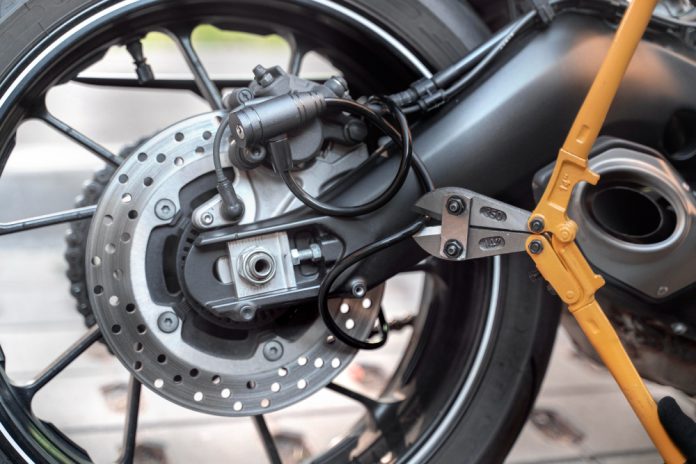Every cyclist knows that a smooth, efficient ride depends heavily on a well-maintained bike chain. Whether you are a weekend rider or a daily commuter, your bike chain endures immense wear and tear as it keeps your wheels spinning. Yet, it’s one of the most overlooked parts of the bicycle when it comes to routine care. Without proper maintenance, your rides can quickly go from smooth and silent to rough and noisy. Understanding how to maintain your bike chain not only ensures performance but also extends the life of your entire drivetrain.
This blog will walk you through simple yet effective bike chain maintenance tips that every rider should know. You’ll learn the essential steps to clean, lubricate, and inspect your chain to keep it in optimal condition throughout the year. Maintaining your bike chain doesn’t require professional tools or skills—just a bit of time and attention. Let’s explore how a few simple practices can improve your biking experience. And if your chain ever fails mid-ride, remember that Crossroads Helpline offers fast roadside assistance for cyclists.
Things to Know Before Maintaining Your Bike Chain
Before diving into the steps of bike chain maintenance, it’s important to understand a few foundational aspects. Your bike chain is part of a larger system that includes gears, derailleurs, and sprockets, all working in unison to ensure efficient motion. Regular maintenance of your bike chain is not just about cleaning it—it’s about preserving the balance and alignment of these interconnected parts. A dirty or dry chain increases friction, wears out faster, and may even damage other components of your bike.
Additionally, knowing your chain type and usage pattern helps determine how often you should perform maintenance. Riders who frequently ride in wet or dusty environments should clean and lubricate their chains more often than occasional city riders. By identifying your riding conditions and monitoring signs of wear, you can set an effective maintenance routine that keeps your bike performing at its best.
Understand Your Chain Type
Most modern bicycles come equipped with derailleur chains, designed to shift smoothly between multiple gears. These chains are flexible and rely on precise lubrication to move seamlessly through the gear set. In contrast, single-speed and internal hub bikes use thicker, less flexible chains that require less frequent maintenance. Understanding your chain type helps you choose the right cleaning and lubrication approach for maximum efficiency.
It’s also important to check your bike manufacturer’s manual for specific maintenance recommendations. Some chains are coated or treated differently, which may affect how often they need lubrication. Knowing this information ensures that you don’t over-clean or over-lubricate your chain, both of which can be counterproductive in the long run.
Check for Chain Wear
Chain wear is one of the most common issues cyclists face. Over time, the pins and rollers stretch slightly, which leads to poor shifting and reduced performance. Using a chain checker tool, you can measure how much your chain has elongated and determine if it’s time for replacement. A stretched chain can also cause premature wear on your cassette, which can be a costly repair.
Even without a tool, you can visually inspect your chain for signs of rust, stiff links, or irregular movement. If your chain skips gears or makes grinding noises, it’s a good indication that it’s time for inspection or replacement. Regular checks will save you from bigger maintenance costs later.
Know When to Clean and Lubricate
The frequency of cleaning and lubrication depends largely on your riding conditions. If you ride on dusty trails or wet roads, you’ll need to clean your chain more often—ideally after every few rides. For urban riders or those who ride occasionally, a monthly cleaning and lubrication routine is generally sufficient.
Keeping your chain clean prevents grit and grime from accumulating in the links, while proper lubrication ensures smooth operation and reduces metal-on-metal contact. Ignoring these steps can lead to chain slippage, poor shifting, and even chain breakage during rides.
Choose the Right Lubricant
Not all lubricants are created equal. Bike chain lubricants are typically classified as wet lubes and dry lubes. Wet lubes are best for humid or rainy conditions because they stay on longer and resist washing off easily. Dry lubes, on the other hand, are ideal for dry, dusty environments and prevent dirt buildup.
Using the wrong type of lubricant can attract debris or wash off too quickly, leading to a noisy and inefficient chain. It’s worth investing in a high-quality bike-specific lube rather than using general-purpose oils, which can do more harm than good over time.
Have the Right Tools Ready
Maintaining your bike chain doesn’t require a workshop full of tools, but having a few essentials makes the process much easier. A chain cleaning device, degreaser, brush, and lint-free cloth are sufficient for routine cleaning. A chain checker tool is also helpful for monitoring wear.
Keeping these tools handy ensures that you can quickly perform maintenance whenever needed. A well-prepared cyclist can handle small issues before they turn into major problems, ensuring a safer and smoother ride.
Step-by-Step Guide to Cleaning Your Bike Chain
Cleaning your bike chain is a straightforward process that can dramatically improve your ride quality. The first step is to remove dirt and grime that has accumulated over time. Start by placing your bike on a stand so the rear wheel can rotate freely. Apply a bike-specific degreaser to the chain while rotating the pedals backward. Let it sit for a few minutes to break down stubborn grease and dirt.
Next, use a brush or a chain cleaning tool to scrub away the loosened grime. Pay attention to each link to ensure no residue remains. Once you’ve scrubbed thoroughly, rinse the chain with a damp cloth and dry it completely before applying lubricant. Moisture left behind can trap dirt or cause rust, especially if the bike is stored in a humid environment.
How to Lubricate Your Bike Chain
Lubrication is essential for ensuring smooth operation and reducing friction between the chain links. Once your chain is completely dry, apply lubricant evenly across each link while rotating the pedals backward. This allows the lube to penetrate deep into the chain. Avoid over-applying; excess lubricant attracts dirt and dust, negating the benefits of cleaning.
After applying, let the lubricant sit for a few minutes, then wipe off any excess with a clean cloth. This step helps maintain an optimal balance between lubrication and cleanliness. A well-lubricated chain should feel smooth and run quietly through the gears, offering a noticeable improvement in ride efficiency.
Inspect and Replace When Needed
Even with regular maintenance, every bike chain has a lifespan. Depending on how often and where you ride, a chain typically lasts between 2,000 to 3,000 miles. Regular inspections help you spot early signs of wear before they cause damage to other drivetrain components. Check for tight or rusted links and listen for unusual noises while riding.
If you notice consistent slipping, skipping gears, or chain drop, it’s probably time to replace your chain. Replacing a worn chain is much cheaper than replacing a cassette or chainrings that have been damaged by prolonged use of a stretched chain. Routine inspections ensure that your bike remains safe and efficient.
Storage and Protection Tips
How you store your bike can also affect the longevity of your chain. Storing your bike in a dry, shaded area helps prevent rust and corrosion. If you ride in the rain, always dry and lubricate your chain afterward before storage. Moisture and dirt left unchecked can lead to rust, which weakens the chain over time.
You can also use chain guards or covers for additional protection, especially if you keep your bike outdoors. Regularly wiping down your chain with a dry cloth after every ride also prevents buildup of dust and debris. A little post-ride care can go a long way in maintaining your chain’s lifespan.
Why Choose Crossroads Helpline for Roadside Assistance
No matter how well you maintain your bike chain, unexpected breakdowns can still occur. When you find yourself stranded with a broken chain or other mechanical issue, Crossroads Helpline is your trusted partner for quick, reliable roadside assistance. Their team understands the challenges riders face on the road and provides instant help wherever you are.
Crossroads Helpline offers 24/7 assistance, ensuring that you never have to worry about being stuck mid-ride. With expert technicians and rapid response services, they can handle chain repairs, tire issues, and even transportation if needed. Choosing Crossroads Helpline means choosing peace of mind on every journey.
Conclusion
Maintaining your bike chain is a simple yet powerful way to ensure a safe and enjoyable riding experience. Regular cleaning, proper lubrication, and timely inspections can significantly extend the lifespan of your chain and keep your bike performing at its best. While it only takes a few minutes after each ride, the benefits of smoother gear shifts, better efficiency, and reduced repair costs are undeniable.
By following these easy maintenance tips, you’ll not only improve your bike’s performance but also gain more confidence on the road. And if you ever face a breakdown that’s beyond your toolkit, remember that Crossroads Helpline is just a call away to get you back on track safely. With a little proactive care and reliable support, your cycling adventures will always stay smooth and trouble-free.





